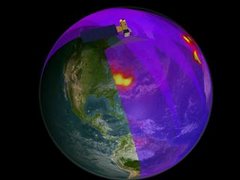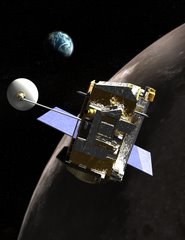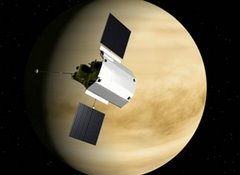
With less than one year to go until launch, the assembly of the
Lunar Reconnaissance Orbiter (LRO) spacecraft and its six scientific instruments is in full swing. The actual spacecraft and one of its instruments, the
Lunar Orbiter Laser Altimeter (LOLA), are being built here at
NASA's Goddard Space Flight Center in MD. Both the spacecraft and all of its instruments must undergo rigorous testing to ensure that they can survive the physical stresses of launch and the extreme environment of space. Each component is exposed to excessive vibrations and extreme hot and cold temperatures in vacuum conditions. In addition, the wiring, electronics, and software is tested and retested to ensure that everything is connected and operating correctly and to ensure the validity of the procedures we'll use to operate the spacecraft and instruments once they're in space. Before we test the actual components that will be traveling into space, we first run the same tests on their mockups! As you can imagine, Goddard engineers and scientists work long and hard to make sure that all of these tests are successful so that the assembly of the spacecraft and its instruments stays on schedule.
Currently, a mockup of the
Lunar Exploration Neutron Detector (LEND) instrument is at Goddard to undergo "FlatSat" testing before the actual flight instrument arrives for its own testing next month. "FlatSat" stands for flat satellite and is where all of LRO's electronic components will be laid out and hooked together on a long table and attached electrically like they will be during flight. In addition to testing LRO's components before launch, mission operations will use FlatSat to test commands before sending them to the spacecraft during its actual mission. Click
here to see photos of LEND's FlatSat testing and to keep up with other developments in the assembly of LRO.



















